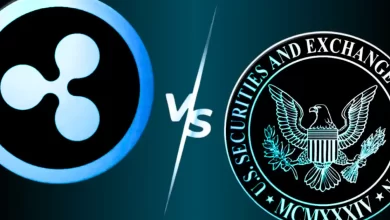Can XRP be moved offline? David Schwartz answers

A recent surge of speculation within the XRP community centered around the XRP Ledger’s (XRPL) supposed ability to facilitate XRP transactions offline, independent of an internet connection.
This notion gained traction through a community member SMQKE, who presentedexamples of payment systems utilizing SMS or Bluetooth Low Energy for offline XRP transactions.
One instance cited was iBonus’ offline payment system for retail CBDC, which employed QR codes and Bluetooth to conduct transactions without internet access. It’s crucial to clarify that while this mobile payment solution leverages the XRPL for secure and traceable payments, the offline functionality resides within the specific application, not the XRPL itself.
Read Also: XRP Displaces SOL, Drops about $20 Billion As Solana Network Keeps Going Offline
Another example included Mandla Money, a wallet service highlighted on the XRPL.org blog for facilitating digital asset transactions through SMS, seemingly bypassing the internet and smartphone dependency. However, prominent figures within the XRPL developer community have debunked the claim that the XRPL inherently possesses offline capabilities.
Setting the Record Straight
Vet, an XRPL validator, stepped forward to clarify the misconception. According to Vet, Mandla Money, like some crypto exchanges, utilizes destination tags to manage user XRP balances. This method doesn’t involve the actual movement of funds on the blockchain; instead, it adjusts user balances based on assigned tags.
Even if Mandla Money were to implement a system that triggers on-chain transactions upon receiving SMS or Bluetooth signals, it would still necessitate online connectivity at some point in the process. Notably, Vet emphasizes that such a mechanism isn’t unique to the XRPL and could be applied to any blockchain platform.
Ripple CTO Clarifies
Further reinforcing this point, Wietse Wind, founder of XRPL Labs, echoed Vet’s assessment. Wind confirms that the XRPL itself doesn’t inherently support offline transactions.
While offline verification of validations might be possible with the necessary data, any device initiating transactions must connect to an online entity at some stage. In simpler terms, internet access remains a requirement during the transaction process.
David Schwartz, Ripple CTO, aligns with Wind’s explanation. He emphasizes that for a transaction to be successfully recorded on the XRPL, it needs to be transmitted over the internet. He sheds light on the misconception surrounding “offline transactions” within the XRPL, clarifying that they either don’t occur directly on the ledger or involve intermediaries with internet connectivity.
Addressing Continued Speculation
Despite these clarifications, SMQKE presented a video suggesting the possibility of conducting XRPL transactions through radio waves and satellites, bypassing the internet entirely. Vet addressed this by differentiating between the XRPL’s core functionalities and third-party applications that act as intermediaries to initiate online transactions on the XRPL.
Vet emphasizes that such applications don’t naturally grant the XRPL offline capabilities. He draws an analogy to illustrate this concept: training a parrot to enter a PIN code for a transaction wouldn’t imply that the system itself is now “parrot-enabled.” Similarly, relying on external methods with internet connectivity doesn’t imbue the XRPL with offline transaction processing abilities.
While innovative solutions utilizing SMS, Bluetooth, or alternative communication methods can facilitate seemingly offline transactions within the XRP ecosystem, it’s essential to understand that these functionalities reside within separate applications, not the XRPL itself. The core protocol of the XRPL currently requires internet connectivity at some point during the transaction process for successful completion.





